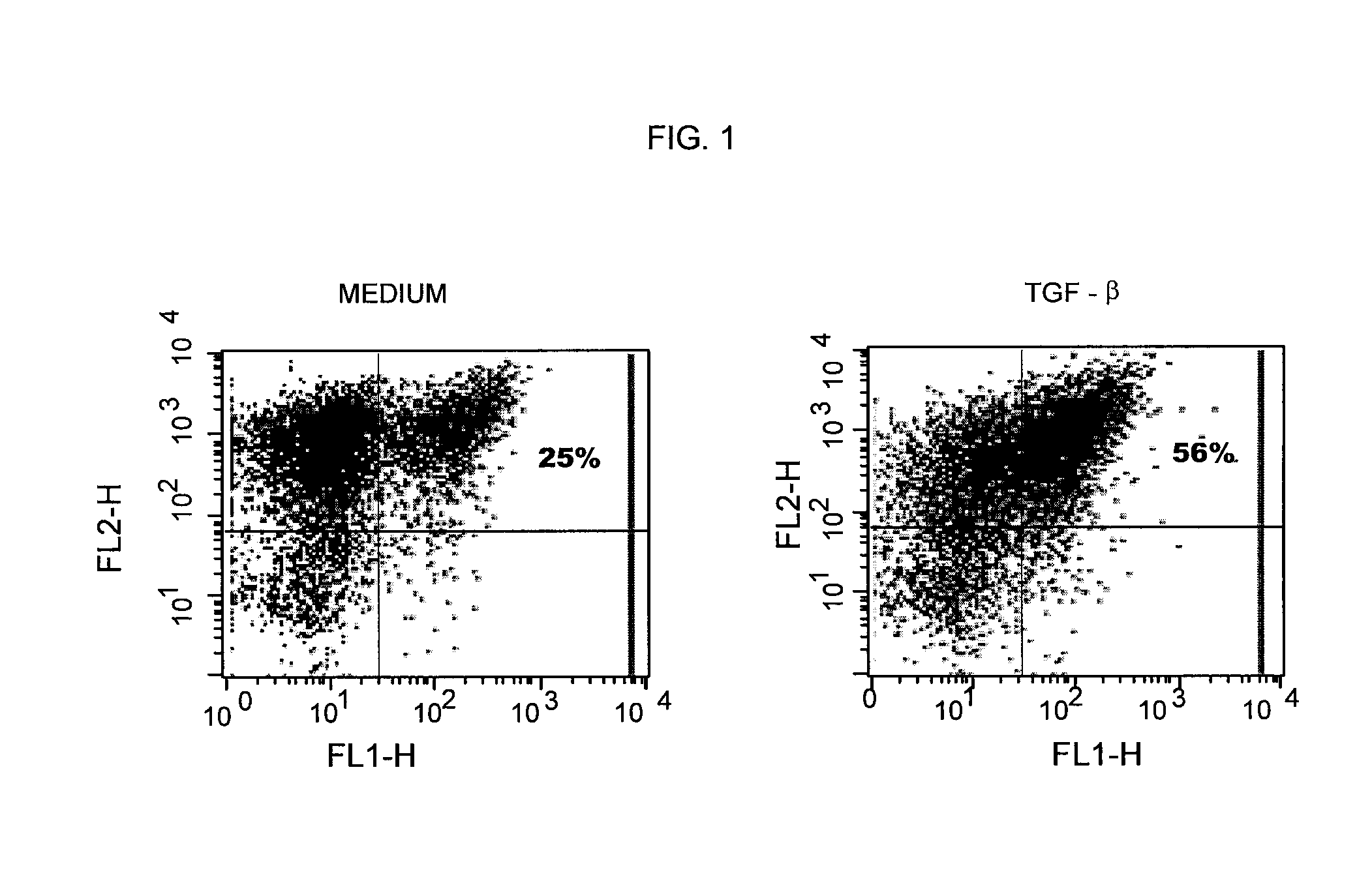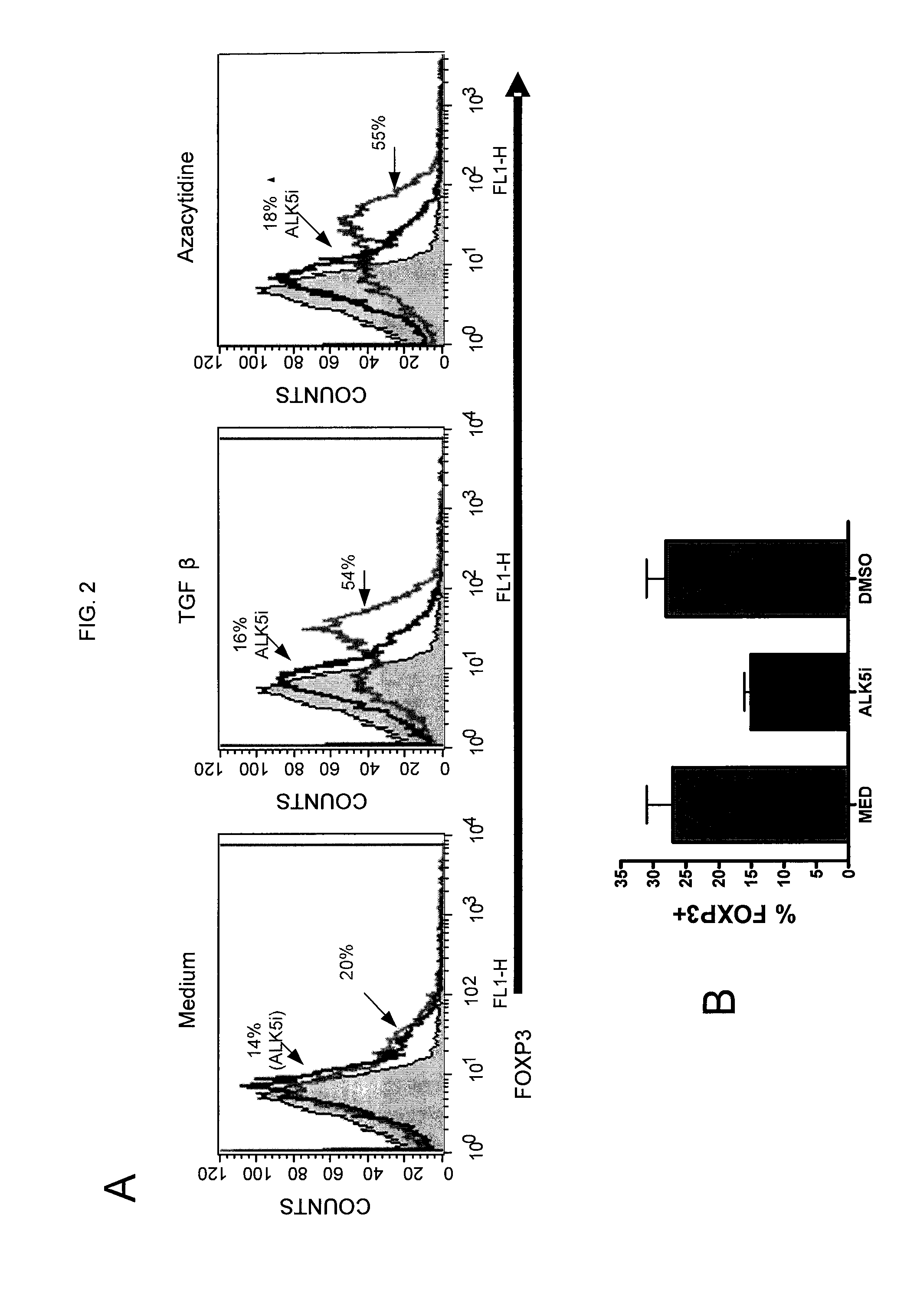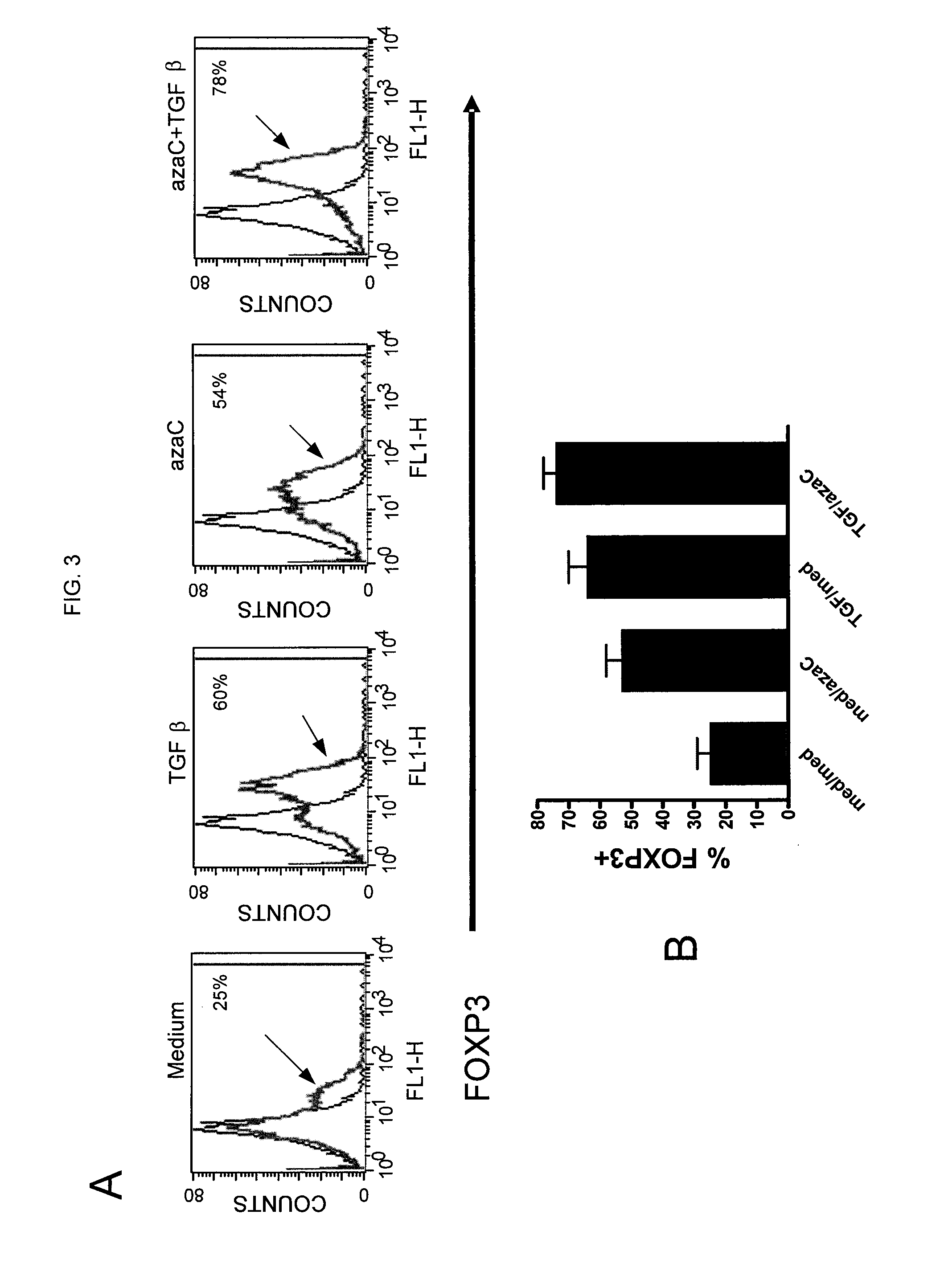Methods and compositions for accelerating the generation of regulatory t cells ex vivo
a technology of regulatory t cells and compositions, applied in drug compositions, immunology disorders, biocide, etc., can solve the problems of failure of conventional methods utilizing tgf- and il-2 to generate stable suppressor cell populations without repeated stimulation, and difficult generation of polyclonal itregs ex vivo, etc., to increase cd4+ cells, enhance foxp3 expression, and enhance foxp3 expression
- Summary
- Abstract
- Description
- Claims
- Application Information
AI Technical Summary
Problems solved by technology
Method used
Image
Examples
example 1
FOXP3 Expression in Stimulated CD4+ Cells
[0121]FIG. 1 is a typical example of FOXP3 expression at day 6 of cultures of non-regulatory T cells. In the experiments represented in this figure, naïve CD4+ cells were stimulated with 3 / 28 beads (1 bead per 10 T cells) with (right panel) or without (left panel) TGF-β for 6 days. The data show that FOXP3 expression was enhanced by TGF-β (the percentage of FOXP3 expressing cells is indicated in each graph). While FOXP3 is expressed by cells from both cultures, there are twice as many cells which express FOXP3 from the cultures which had TGF-β added.
example 2
Comparison of Azacytidine and TGF-β Effect on FOXP3 Expression
[0122]FIG. 2A shows the effect of activin receptor-like kinase 5 inhibitor (ALK5i) on FOXP3 expression. This inhibitor blocks TGF-β type I receptor signaling. The figures in FIG. 2A provide data from flow cytometry analysis of stimulated CD4+ cells. Naïve CD4+ cells were stimulated with anti-CD3 / CD28 beads for 5 or 6 days in medium only (left-most panel), in the presence of 5 ng / ml TGF-β (middle panel) or with 1 μM azacytidine (right-most panel). The graphs also show data from cells stimulated with and without ALK5i (10 μM). The shaded area shows cells stained with control IgG only. FIG. 2A shows that azacytidine enhances FOXP3 expression to a similar extent as the enhancement seen with TGF-β. The data in FIG. 2A also suggests that the enhancement of FOXP3 expression by azacytidine is at least partially TGF-β dependent, because the ALK5i inhibited FOXP3 expression induced by azacytidine to the same extent as FOXP3 express...
example 3
Assessment of Additive Effects of TGF-β and Azacytidine on FOXP3 Expression
[0124]The additive effects of TGF-β and azacytidine on FOXP3 expression were analyzed. FIG. 3 shows data demonstrating the additive effects of TGF-β and azacytidine on FOXP3 expression. FIG. 3A provides flow cytometry data from naïve CD4 cells stimulated with anti-CD3 / CD28 beads for 5 or 6 days in (in order of the panels from left to right) medium alone, in medium containing TGF-β, in medium containing azacytidine, and in medium containing azacytidine and TGF-β. The arrows indicate the cell counts after stimulation with anti-CD3 / anti-CD28. FIG. 3B shows the mean±SEM of 5 experiments and demonstrates the percentage of FOXP3 expression after stimulation in medium only, in medium containing azacytidine (1 μM), in medium containing TGF-β (5 ng / ml), and in medium containing both azacytidine and TGF-β. These data suggest that azacytidine and TGF-β have an additive effect in enhancing FOXP3 expression.
PUM
| Property | Measurement | Unit |
|---|---|---|
| concentration | aaaaa | aaaaa |
| concentration | aaaaa | aaaaa |
| concentration | aaaaa | aaaaa |
Abstract
Description
Claims
Application Information
 Login to View More
Login to View More - R&D
- Intellectual Property
- Life Sciences
- Materials
- Tech Scout
- Unparalleled Data Quality
- Higher Quality Content
- 60% Fewer Hallucinations
Browse by: Latest US Patents, China's latest patents, Technical Efficacy Thesaurus, Application Domain, Technology Topic, Popular Technical Reports.
© 2025 PatSnap. All rights reserved.Legal|Privacy policy|Modern Slavery Act Transparency Statement|Sitemap|About US| Contact US: help@patsnap.com



